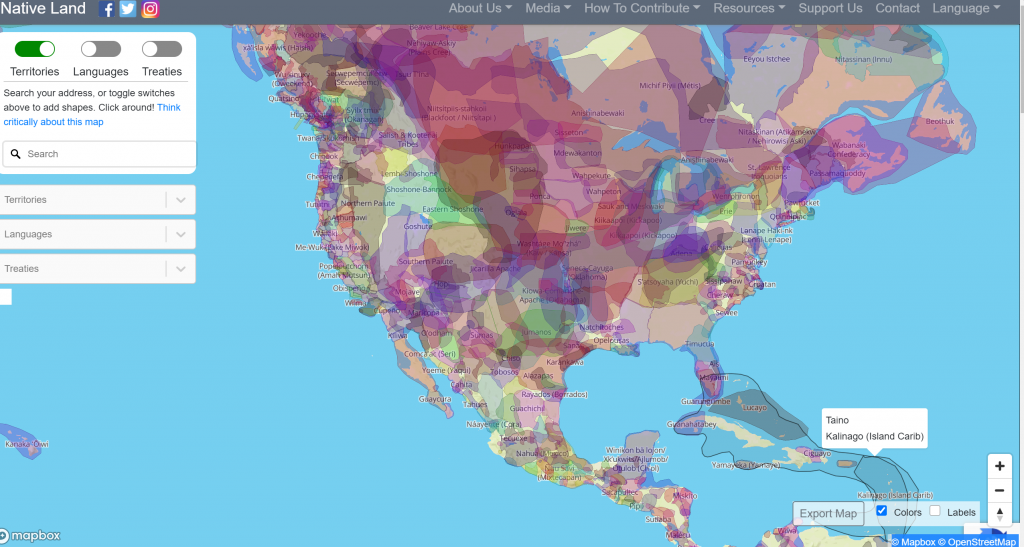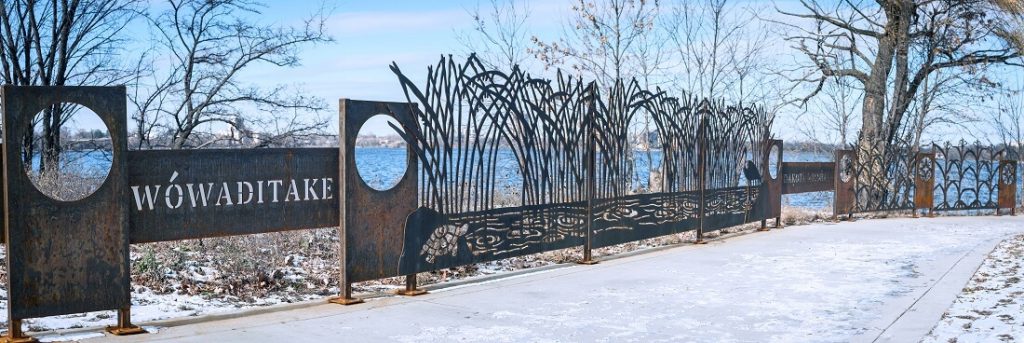A Story of Many Plymouths, Pt. 3
As we have explored in our past two posts, many connections can be made through the very name of a place. It can draw associations to far away locales. It can remind an area of its historic roots. It can also act as a form of historical amnesia; as a place is re-named, its former iterations and associations can be lost or forgotten. We explored how Plymouth was briefly named Medicine Lake, which was thought to be an association to its indigenous name.
In our November virtual open house, we further explored this theme through resources and examples that aim to restore historical knowledge of indigenous place and naming as a means of showing enduring presence in today’s landscape.

For example, Native Land is a mapping project based in Canada that “strives to create and foster conversations about the history of colonialism, Indigenous ways of knowing, and settler-Indigenous relations, through educational resources such as our map and Territory Acknowledgement Guide.” The non-profit project has an Indigenous-led team that works with community and open-source knowledge to create fluid boundaries that express the complexity of land use over time, here delineated by territories, treaties and languages. It demonstrates that the hard political boundaries that form the basis of many maps need not be an assumed way of experiencing and understanding place. On the map, you can type in a contemporary street address, and it will direct you to exploring that location within the framework of the map’s resources.

A recent local example is the restoration of the name Bde Maka Ska (formerly Lake Calhoun) in Minneapolis. This project included a process of historic research, public engagement, and public art as a way of expressing the importance of the lake in Dakota life. Art works created by Mona Smith, Sandy Spieler and Angela Two Stars along the lake’s southwest edge give specific name in the Dakota language to the location of Heyata Otunwe (“the village at the side”), a village founded in 1829 under the leadership of Mahpiya Wicasta (Cloud Man). Though the village was relatively short-lived, the importance of Bde Maka Ska in Dakota life remains. A series of decorative railings along the lake’s edge and stamped images in the concrete path give visual reminder of continued presence, while the incorporation of Dakota language brings further life to this significance. Another beautiful example by Marlena Myles extends this theme further by naming sites throughout the Twin Cities with Dakota place names in a colorfully designed map.
These projects present interesting examples of how historians, educators, and artists have opened the conversation of place names. As our conversations continue, the question of how we can bring voice to many underrepresented aspects of Plymouth’s history continues as a theme we will explore.